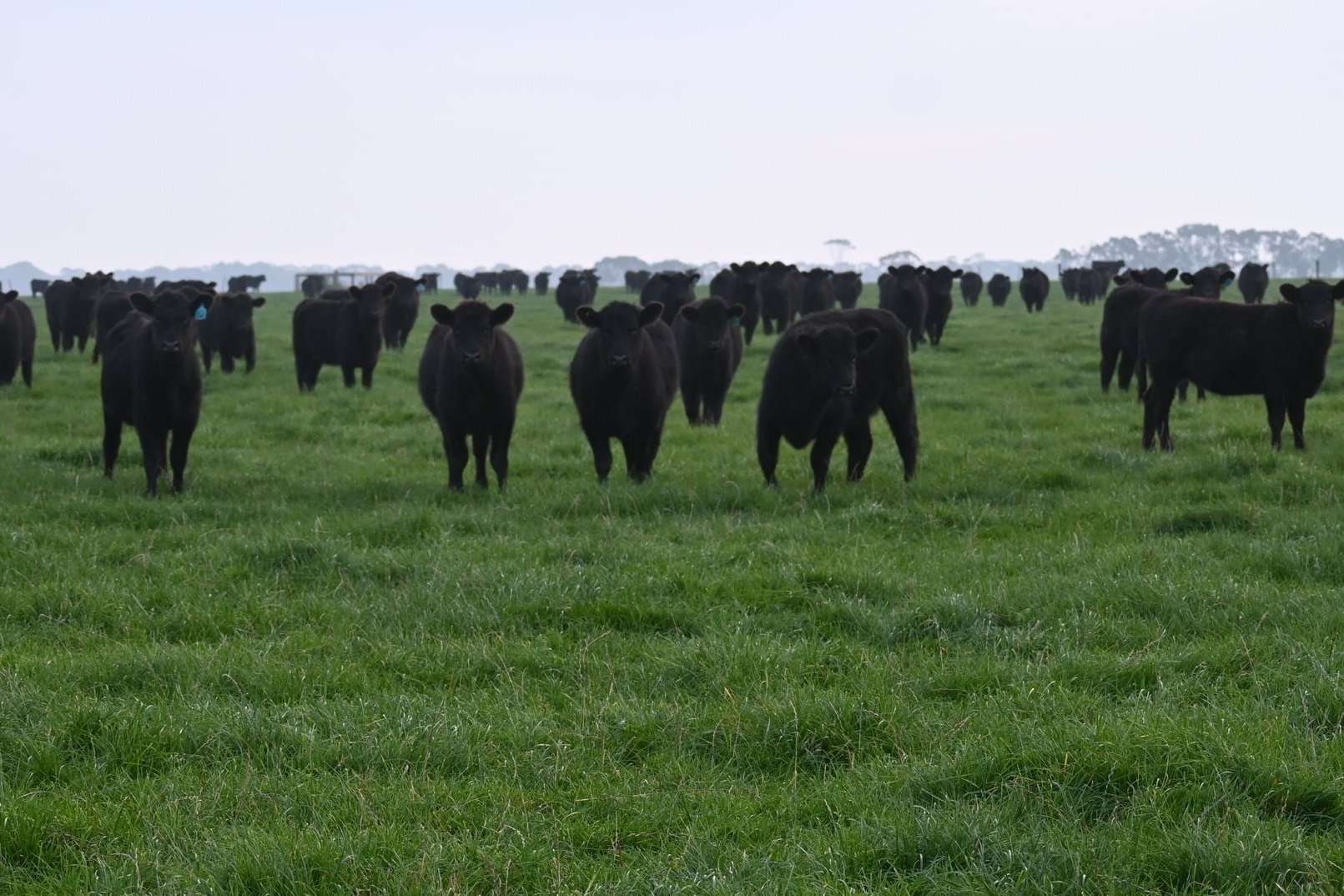
Beef
Beef
The Great South Coast is a significant beef and lamb producer, accounting for 29.5% and 33.1% of Victoria's total beef and sheep meat production, respectively, amounting to $1.39 billion in Gross Value.
Reliable rainfall provides an unparalleled season of nine months for pasture growing and successful meat production.
The Great South Coast takes advantage of a clean and green image alongside biosecurity benefits and commitment to net-zero emissions providing a competitive edge in an export-oriented market.
The production of sheep meat allows the region to capitalise on changing diets in emerging Asian economies. CSIRO’s Protein Roadmap for Australia forecasts the potential of red meat integrity systems for exports and for red meat for health and wellness markets to expand from $16.3 billion to 22.2 billion by 2030.
Investment opportunities in the sector include:
Integrity systems in the red meat sector to help verify the origin of production, support compliance, prevent risks and support research
Expanding Australian red meat exports into new geographic markets
Turning lesser cuts of red meat into value-added protein powders and nutraceuticals
Precision fermentation
Cultivated meats.
Australia's food and fibre exports by state value (%)
Key Stats
Beef Value Chain
Additional Information.
Biosecurity, Agriculture Victoria: https://agriculture.vic.gov.au/biosecurity
Livestock and animals, Agriculture Victoria: https://www.vff.org.au/fact-sheet-category/farm-safety/
Farm safety, Victorian Farmers Federation: https://www.vff.org.au/fact-sheet-category/farm-safety/
Farm management, Agriculture Victoria: https://agriculture.vic.gov.au/farm-management
Climate and weather, Agriculture Victoria: https://agriculture.vic.gov.au/climate-and-weather
Animal health, welfare and biosecurity, Victorian Farmers Federation, StockSense: https://www.vff.org.au/project/stock-sense/
Identification and traceability system for cattle, sheep and goats, National Livestock Information System: https://www.nlis.com.au/
Report roaming livestock in Moyne Shire: https://www.moyne.vic.gov.au/Your-council/Customer-requests#:~:text=if%20your%20request%20is%20urgent,a%20public%20toilet%20that%20 needs If it is an emergency phone 1300 656 564.
Report roaming livestock or a dog attacking livestock to the Corrangamite Shire: https://www.corangamite.vic.gov.au/Property/Pets-Animals-Livestock/Livestock#section-2. If it is an emergency phone 03 5593 7100.
Report roaming livestock or a dog attacking livestock to the Glenelg Shire: https://www.glenelg.vic.gov.au/Our-Services/Animals-and-Local-Laws/Animals/Livestock . If it is an emergency phone 1300 453 635.
Report roaming livestock or a dog attacking livestock to the Southern Grampians Shire: https://www.sthgrampians.vic.gov.au/Our-Services/Pets-Animals/Wandering-Stock-Wildlife#:~:text=If%20the%20stock%20is%20wandering,In%20an%20emergency%20contact%20000. If it is an emergency phone 03 03 5551 0300.
Food and Fibre Great South Coast acknowledges that much of the material presented in this profile and the links are general in nature. If you have a specific question related to the Great South Coast please email info@foodfibregsc.com.au and we will provide a response either by return email or phone call.





